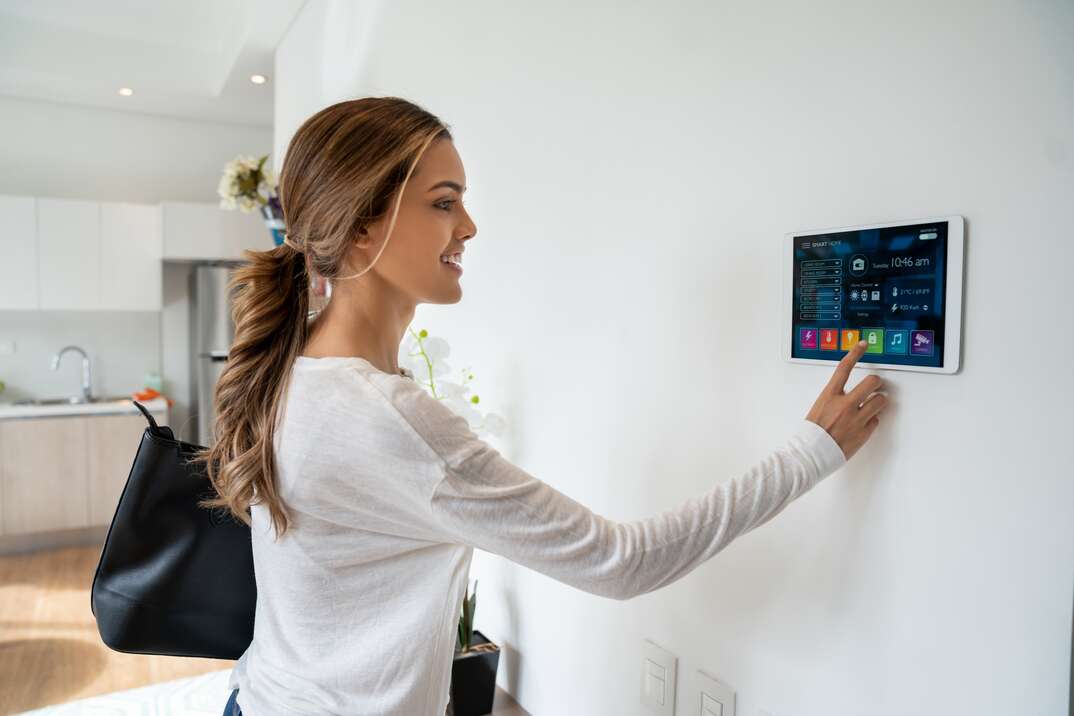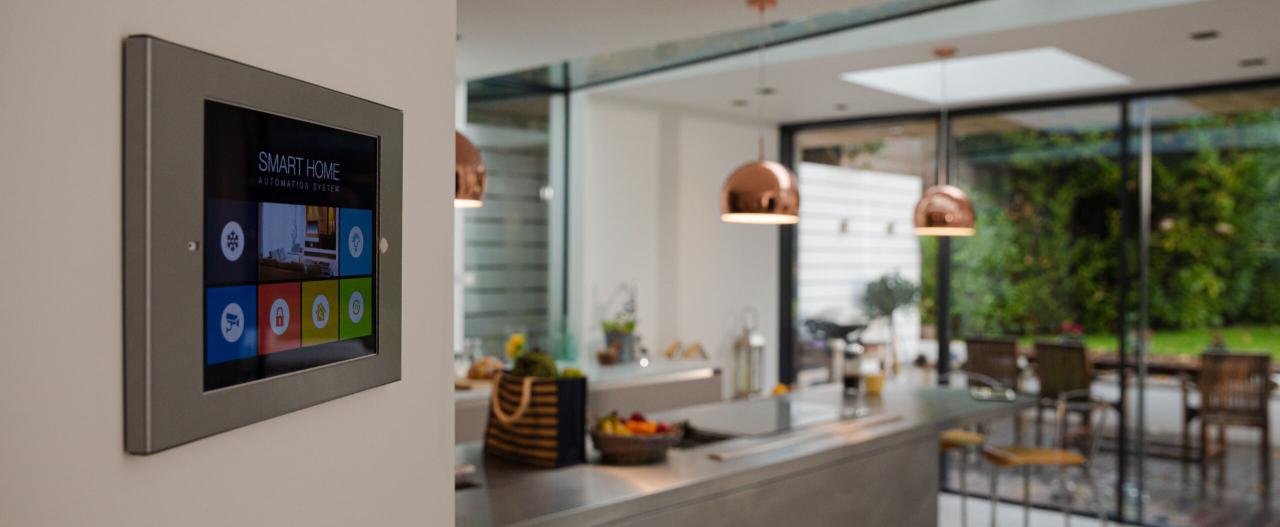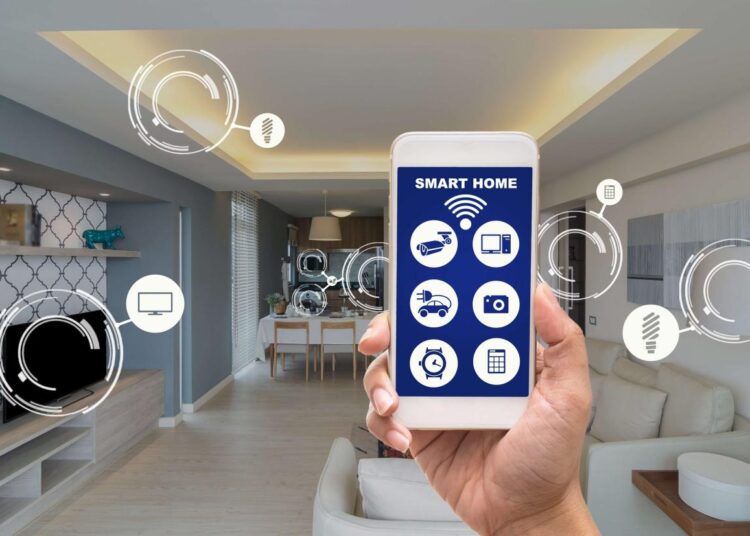The concept of a “smart home” has rapidly evolved from futuristic fantasy to an accessible reality, transforming mundane routines into seamless, automated experiences. Modern smart home upgrades are no longer just about convenience; they’re about enhancing security, boosting energy efficiency, and creating personalized living environments that genuinely improve our daily lives. This in-depth guide delves into the essential smart home devices and systems that are reshaping residential spaces, offering both practical benefits and a glimpse into the technologically integrated homes of tomorrow. We’ll explore how these innovative solutions work, what makes them indispensable, and how they contribute to a more efficient, secure, and enjoyable domestic life.
Connectivity and Central Control

At the heart of any truly smart home lies a robust and reliable network infrastructure, coupled with intuitive central control systems that act as the brain of your connected abode.
A. High-Speed, Reliable Wi-Fi Networks: Before integrating any smart devices, a strong and stable Wi-Fi network is paramount. Modern smart homes require significant bandwidth to support numerous connected devices simultaneously, from streaming 4K video to managing dozens of IoT sensors. Upgrading to a mesh Wi-Fi system can eliminate dead zones, ensuring consistent coverage throughout your entire property. These systems use multiple access points to create a single, seamless network, providing optimal performance for all your smart gadgets. Investing in a router with Wi-Fi 6 or 7 capabilities will future-proof your network, supporting faster speeds and more efficient data handling for the next generation of smart devices.
B. Smart Hubs and Voice Assistants: These are the command centers of your smart home. Devices like the Amazon Echo, Google Nest Hub, or Apple HomePod Mini serve as central interfaces, allowing you to control all your connected devices through voice commands or a centralized app. They act as bridges between different smart home ecosystems, enabling devices from various manufacturers to communicate and work together. Beyond simple commands, these hubs can execute complex routines (e.g., “Good Morning” routine turns on lights, starts coffee, and reads news), learn your habits, and even offer proactive suggestions, making your home truly intelligent and responsive.
C. Universal Remote Controls and Smart Displays: While voice control is powerful, smart displays offer a visual interface for managing your home. These touchscreen devices allow you to view security camera feeds, adjust thermostat settings with a tap, see who’s at the door, or even follow a recipe while cooking. For entertainment, universal smart remotes can consolidate control of your TV, sound system, and media players into a single, intuitive device, eliminating clutter and simplifying your home theater experience. Some advanced remotes even integrate with smart lighting and blinds for a cinematic ambiance.
D. Zigbee, Z-Wave, and Thread Protocols: Understanding these wireless communication protocols is crucial for smart home enthusiasts. While Wi-Fi connects many devices, Zigbee and Z-Wave are low-power, mesh networking protocols ideal for smaller, battery-operated sensors and controls (like door sensors, light switches, and smart locks). They create their own dedicated networks, reducing strain on your Wi-Fi. Thread is a newer, IP-based mesh networking protocol designed for IoT, offering robust and secure device communication, often found in Matter-compatible devices. Choosing devices that utilize these protocols can significantly improve responsiveness and battery life for certain smart home components.
Enhanced Security
One of the most compelling reasons to invest in smart home upgrades is the unparalleled level of security and peace of mind they offer.
A. Smart Door Locks and Video Doorbells: Replace traditional locks with smart versions that allow keyless entry via passcodes, fingerprint readers, or even your smartphone. You can grant temporary access to guests, receive notifications when someone enters or leaves, and remotely lock or unlock your doors from anywhere. Paired with video doorbells, which offer live video feeds, two-way audio, and motion detection, you can see and speak to visitors (or potential intruders) without opening your door, even when you’re away. Advanced models include facial recognition to identify known individuals.
B. Comprehensive Smart Camera Systems: Beyond doorbells, integrate indoor and outdoor smart cameras with features like 1080p or 4K resolution, night vision, motion-triggered recording, and cloud storage. AI-powered person detection can differentiate between people, pets, and vehicles, reducing false alarms. Some cameras offer pan-and-tilt functionality for wider coverage, while others can integrate with smart lighting to deter intruders by automatically turning on lights when motion is detected. Many systems also offer professional monitoring services for added security.
C. Smart Alarm Systems: Move beyond basic security systems with smart alarms that integrate with your other connected devices. These systems can include door/window sensors, motion detectors, and glass break sensors. When an alarm is triggered, not only will a siren blare, but your smart lights can flash, cameras can begin recording, and you can receive instant alerts on your phone. Many smart alarm systems also offer professional monitoring and rapid response services, providing an additional layer of protection.
D. Environmental Sensors (Leak, Smoke, CO): Smart homes extend security beyond intrusion to environmental threats. Smart leak detectors can alert you to water leaks from pipes, appliances, or basements, preventing costly damage. Smart smoke and carbon monoxide detectors not only sound an alarm but also send notifications to your phone, automatically turn on lights, and can even unlock doors to facilitate escape, providing crucial alerts even when you’re not home.
Energy Efficiency and Climate Control
Smart home upgrades can significantly reduce energy consumption, saving you money on utility bills and contributing to a more sustainable lifestyle.
A. Smart Thermostats: These devices are perhaps the quintessential energy-saving smart home upgrade. Beyond simple programmability, smart thermostats learn your daily routines, occupancy patterns, and even local weather forecasts to optimize heating and cooling schedules. They can detect when you’re home or away and adjust temperatures accordingly, ensuring comfort while minimizing energy waste. Many offer detailed energy reports, allowing you to track consumption and identify areas for further savings. Some models integrate with voice assistants, allowing you to adjust the temperature with a simple command.
B. Smart Lighting Systems: Replace traditional bulbs with smart LED lights that can be controlled remotely via an app, voice commands, or automated schedules. Beyond simple on/off, smart lights offer dimming capabilities, color-changing options, and the ability to set dynamic scenes (e.g., “movie night” or “focus mode”). Motion sensors can trigger lights to turn on only when a room is occupied, and presence detection can turn them off when empty. This not only saves energy but also enhances ambiance and security.
C. Smart Plugs and Power Strips: These affordable devices instantly transform any “dumb” appliance into a smart one. Plug in lamps, fans, coffee makers, or entertainment systems, and then control them remotely, set schedules, or even monitor their energy consumption. Smart power strips can prevent “vampire drain” by cutting power to electronics when not in use, adding another layer of energy saving. They’re an excellent entry point for those new to smart home technology.
D. Automated Window Blinds and Shades: Integrating smart blinds or shades allows you to automatically control natural light and regulate indoor temperature. Program them to open during the day to let in sunlight for warmth (in winter) or close during peak sun hours to block heat (in summer). This passive climate control significantly reduces the workload on your HVAC system, leading to substantial energy savings and enhanced comfort.
Entertainment and Ambiance

Transform your living room into a personalized entertainment hub with smart devices designed for immersive audio, visual splendor, and dynamic ambiance.
A. Smart TVs and Streaming Devices: Modern smart TVs are the central display for your entertainment. They come with built-in streaming apps, voice control, and often integrate seamlessly with other smart home devices. For older TVs, streaming devices like Apple TV, Roku, or Chromecast instantly upgrade them with smart capabilities, providing access to a vast library of content and integration with your home ecosystem.
B. Multi-Room Audio Systems: Enjoy your favorite music throughout your entire home with multi-room audio systems like Sonos, Bose SoundTouch, or Apple HomePod setups. These systems allow you to play different music in different rooms or synchronize playback for a whole-house party. Control everything from a central app or with voice commands, creating an immersive soundscape that follows you wherever you go.
C. Smart Projectors and Home Theater Integration: For the ultimate cinematic experience, smart projectors offer large-screen viewing with built-in streaming capabilities. Integrate them with smart lighting that dims automatically when the projector turns on, and with smart blinds that close to create the perfect dark environment. Add a smart soundbar or surround sound system for truly immersive audio.
D. Ambient Lighting and Decorative Smart Devices: Beyond functional lighting, smart LED strips, panels, and decorative fixtures can create dynamic lighting effects that enhance the mood for any occasion. Sync them with music, movie playback, or even gaming for an augmented experience. Devices like smart diffusers can release custom scents on demand, further enhancing the sensory ambiance of your home.
Streamlining Daily Routines
The true magic of a smart home lies in its ability to automate mundane tasks and provide unparalleled convenience, freeing up your time for what truly matters.
A. Robotic Vacuum Cleaners and Mops: These autonomous cleaning devices are a game-changer for maintaining a tidy home. Equipped with advanced navigation, mapping capabilities, and obstacle avoidance, robotic vacuums meticulously clean floors on a schedule or on demand. Robotic mops provide hands-free wet cleaning. Many high-end models feature self-emptying dustbins and self-cleaning mop pads, requiring minimal intervention.
B. Smart Kitchen Appliances: The kitchen is increasingly becoming a hub of smart innovation. Smart refrigerators can manage inventory, suggest recipes based on available ingredients, and even alert you when food is expiring. Smart ovens can be preheated remotely and offer precise temperature control, while smart coffee makers can brew your morning coffee before you even get out of bed. These devices streamline meal preparation and reduce food waste.
C. Smart Irrigation Systems: For homeowners with gardens or lawns, smart irrigation systems are a must-have. They use local weather data, soil moisture sensors, and plant-specific requirements to create optimal watering schedules, preventing overwatering and conserving water. Some systems can even detect leaks in your irrigation lines, saving you from costly repairs and water waste.
D. Automated Pet Feeders and Monitoring: For pet owners, smart feeders can dispense precise portions of food on a set schedule, ensuring your furry friends are fed even when you’re away. Integrated cameras allow you to check in on your pets, and some devices even offer two-way audio for interaction. Smart pet doors can be controlled remotely or set to only open for your pet’s microchip, enhancing security.
Outdoor and Garden Enhancements
The smart home experience isn’t limited to the indoors; innovative devices are extending connectivity and automation to your garden, patio, and beyond.
A. Smart Outdoor Lighting: Illuminate your pathways, garden features, and patio with smart outdoor lights that can be controlled remotely, scheduled, or triggered by motion. These systems often offer color-changing capabilities, allowing you to set the perfect ambiance for outdoor gatherings or enhance curb appeal with dynamic lighting effects. They also serve a security purpose by deterring unwanted visitors.
B. Robotic Lawn Mowers: Embrace hands-free lawn care with a robotic lawn mower. These devices autonomously navigate and cut your lawn, returning to their charging base when needed. They can be programmed to operate on a schedule, avoid obstacles, and often come with theft protection. This frees up significant time and effort that would otherwise be spent on yard work.
C. Smart Grills and Outdoor Cooking Appliances: Elevate your outdoor culinary experience with smart grills that offer precise temperature control, integrated meat probes with app notifications, and even guided cooking programs. Some smart pellet grills allow you to monitor and adjust cooking settings from your phone, ensuring perfect results every time.
D. Weather Stations and Environmental Sensors: For gardening enthusiasts, smart weather stations provide real-time local weather data, while soil sensors monitor moisture, nutrient levels, and pH. This data, combined with intelligent algorithms, helps you make informed decisions about watering, fertilizing, and protecting your plants, leading to healthier and more productive gardens.
Advanced Integrations and Future Trends
The beauty of a truly smart home lies in its ability to seamlessly integrate various devices and adapt to future innovations.
A. IFTTT (If This Then That) and Custom Routines: Beyond basic schedules, platforms like IFTTT allow you to create powerful custom automations based on “if this, then that” logic. For example, “If my smart doorbell detects motion, then turn on the porch light and send me a notification.” This level of customization allows you to tailor your smart home to your unique preferences and lifestyle.
B. Matter and Thread for Interoperability: The introduction of industry standards like Matter, built on Thread, is a game-changer for smart home interoperability. These standards aim to create a universal language that allows devices from different manufacturers to communicate and work together effortlessly, reducing fragmentation and simplifying the smart home setup process for consumers. This will ensure greater compatibility and choice in the future.
C. AI and Predictive Automation: The next frontier in smart home technology involves deeper integration of Artificial Intelligence. Future smart homes won’t just follow commands; they’ll anticipate your needs. AI could learn your sleep patterns and adjust temperature and lighting for optimal wake-up, predict appliance maintenance needs, or even personalize entertainment recommendations based on your mood.
D. Voice Biometrics and Advanced Personalization: As voice assistants become more sophisticated, voice biometrics will enable highly personalized experiences. Your smart home could differentiate between family members, offering tailored responses, accessing individual preferences, and ensuring greater security for personal data and settings based on who is speaking.
E. Energy Harvesting and Self-Sustaining Devices: Looking further ahead, devices capable of harvesting energy from their environment (light, motion, ambient RF signals) could eliminate the need for batteries or constant charging, creating truly self-sustaining smart home components. This would significantly reduce maintenance and environmental impact.
Considerations and Best Practices
Embarking on smart home upgrades requires a thoughtful approach to ensure a seamless and rewarding experience.
A. Start Small and Expand Gradually: You don’t need to transform your entire home at once. Begin with a few key devices that address immediate needs, such as a smart thermostat or smart lighting in a frequently used room. As you become familiar with the technology, you can gradually expand your smart home ecosystem.
B. Consider Compatibility and Ecosystems: Before purchasing, research device compatibility. While Matter is aiming for universal compatibility, many devices still lean towards specific ecosystems (e.g., Apple HomeKit, Google Home, Amazon Alexa, Samsung SmartThings). Choosing devices within a preferred ecosystem can simplify setup and management.
C. Prioritize Security and Privacy: Ensure that any smart devices you introduce come from reputable manufacturers with strong security protocols. Change default passwords, enable two-factor authentication, and be mindful of the data devices collect. Regularly update firmware to patch vulnerabilities.
D. Evaluate Your Needs and Lifestyle: The “must-have” upgrades depend on your individual needs. Are you looking for energy savings, enhanced security, or pure convenience? Prioritize upgrades that align with your lifestyle and offer the most tangible benefits for your household.
E. Plan Your Network and Infrastructure: As mentioned earlier, a solid Wi-Fi network is foundational. Consider whether you need additional wiring, power outlets, or a dedicated smart hub to support your chosen devices. A little planning upfront can save headaches later.
Conclusion
In essence, smart home upgrades represent an investment in a future where technology seamlessly supports and enhances our daily lives. By embracing these innovative devices, we can create living spaces that are not only more convenient and enjoyable but also more secure, energy-efficient, and responsive to our evolving needs. The journey to a smarter home is an ongoing one, filled with continuous innovation and the promise of ever more integrated and intuitive living experiences.







